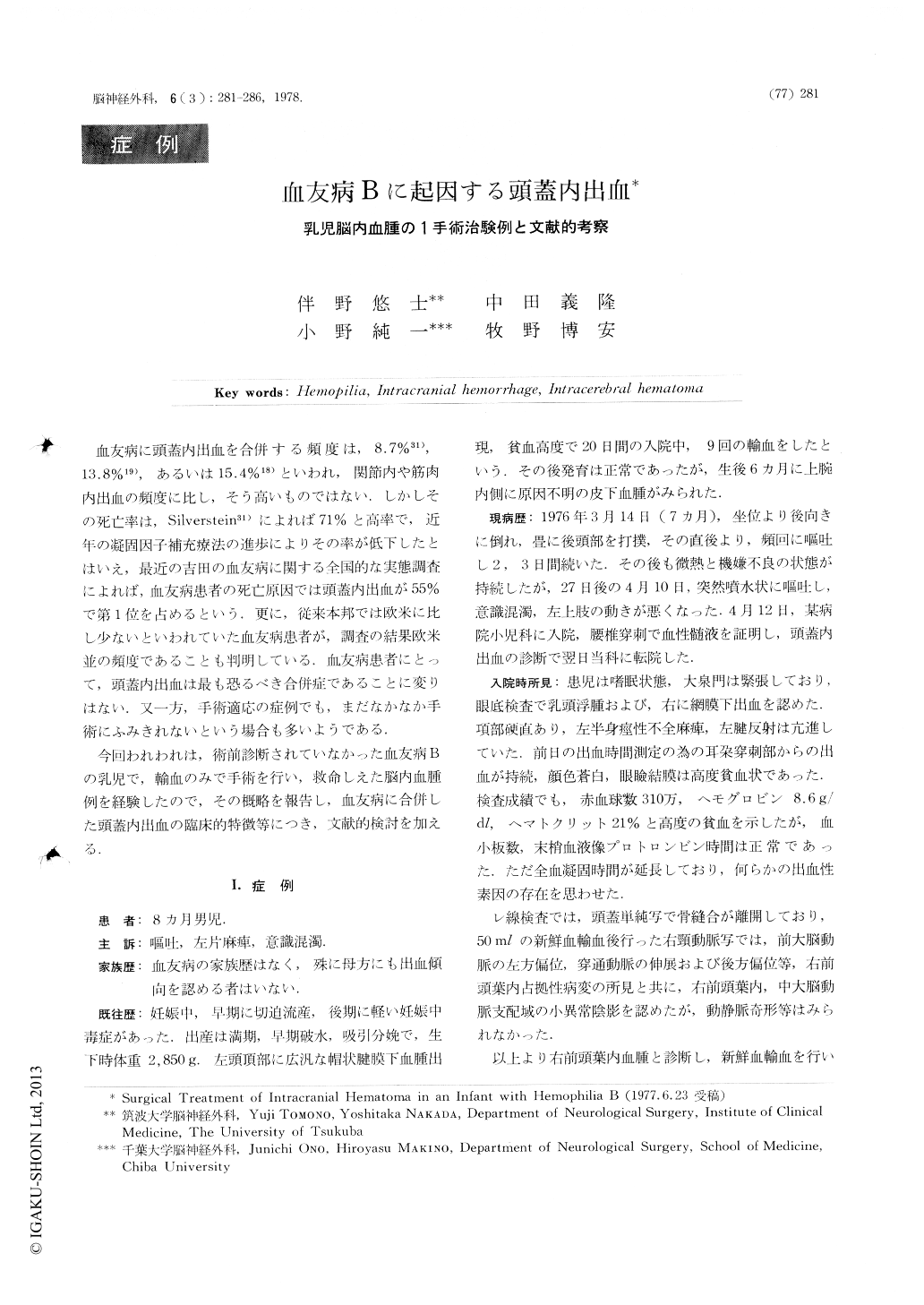Japanese
English
- 有料閲覧
- Abstract 文献概要
- 1ページ目 Look Inside
血友病に頭蓋内出血を合併する頻度は,8.7%31),13.8%19),あるいは15.4%18)といわれ,関節内や筋肉内出血の頻度に比し,そう高いものではない.しかしその死亡率は,Silverstein31)によれば71%と高率で,近年の凝固因子補充療法の進歩によりその率が低下したとはいえ,最近の吉田の血友病に関する全国的な実態調査によれば,血友病患者の死亡原因では頭蓋内出血が55%で第1位を占めるという.更に,従来本邦では欧米に比し少ないといわれていた血友病患者が,調査の結果欧米並の頻度であることも判明している.血友病患者にとって,頭蓋内出血は最も恐るべき合併症であることに変りはない.又一方,手術適応の症例でも,まだなかなか手術にふみきれないという場合も多いようである.
今回われわれは,術前診断されていなかった血友病Bの乳児で,輸血のみで手術を行い,救命しえた脳内血腫例を経験したので,その概略を報告し,血友病に合併した頭蓋内出血の臨床的特徴等につき,文献的検討を加える.
Surgical experience of intracerebral hematoma in an 8-month-old boy with severe hemophilia B, which was not diagnosed preoperatively, was presented. Carotid angiography and removal of hematoma by craniotomy were carried out quite safely under fresh-blood-transfusion. After several months ventriculoperitoneal shunt was placed, because of progressing hydrocephalus and multiple porencephaly, this time, under the cover of the factor Ⅸ complex.
The clinical features of the intracranial hemorrhage in hemophilia were discussed, with analysis of 52 operation cases.

Copyright © 1978, Igaku-Shoin Ltd. All rights reserved.


